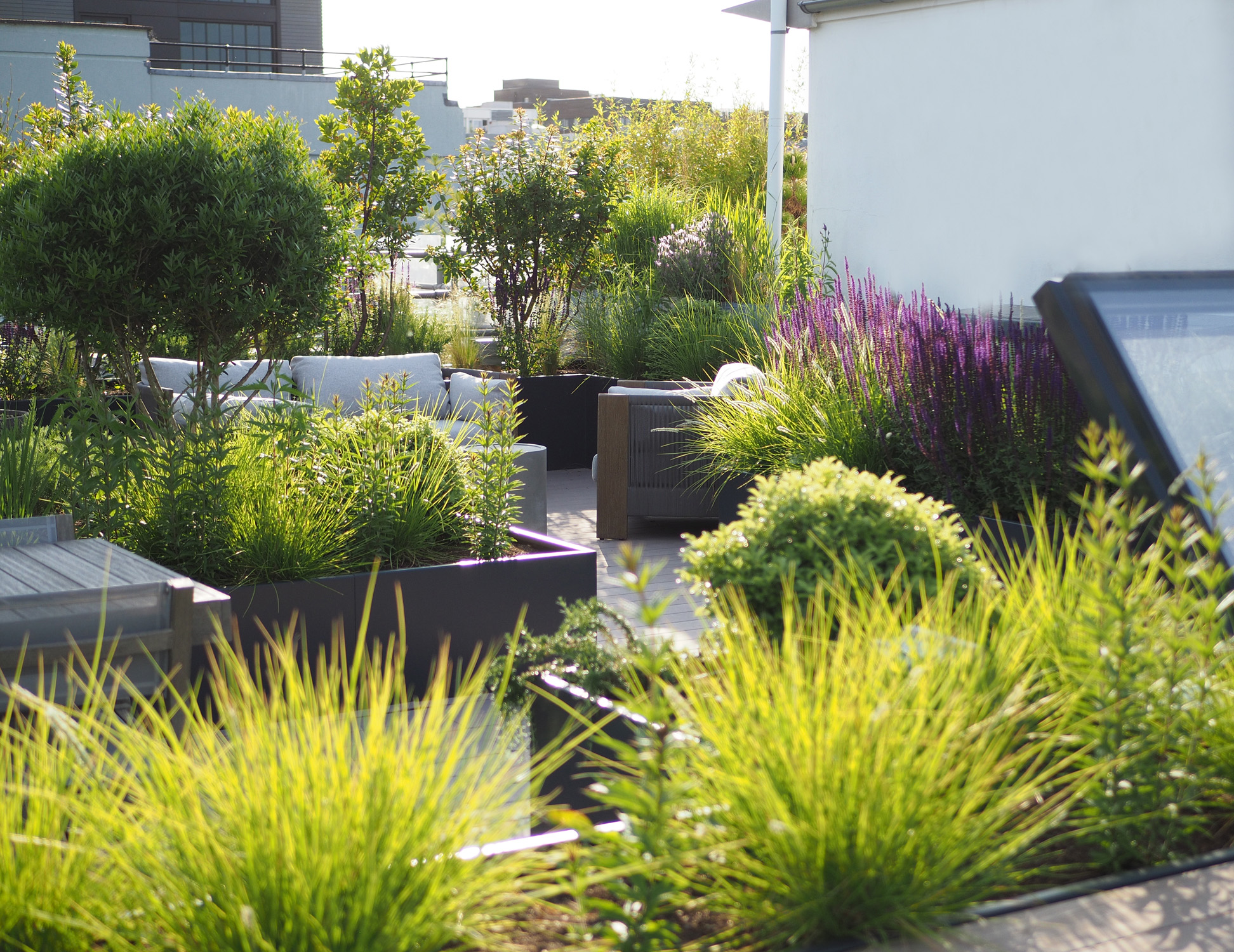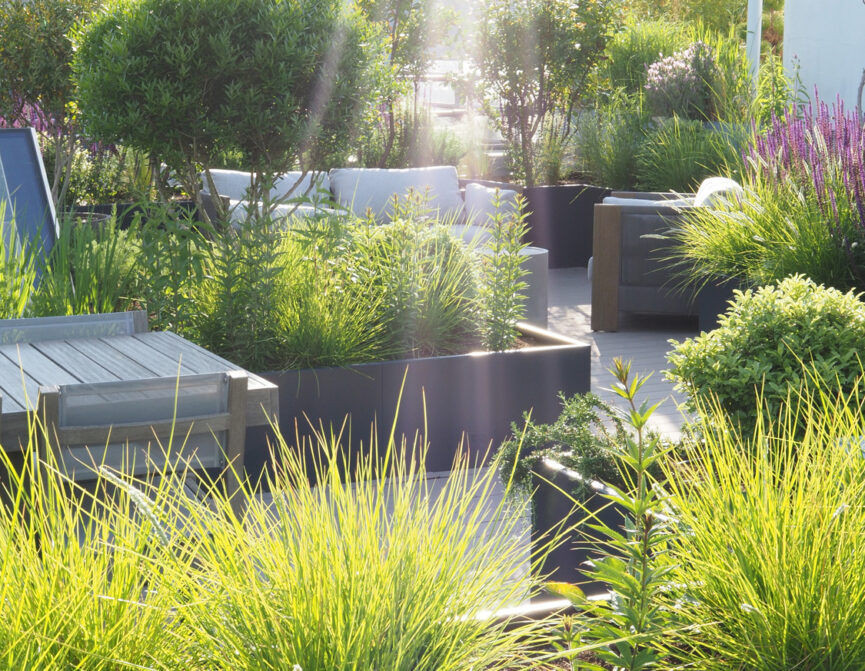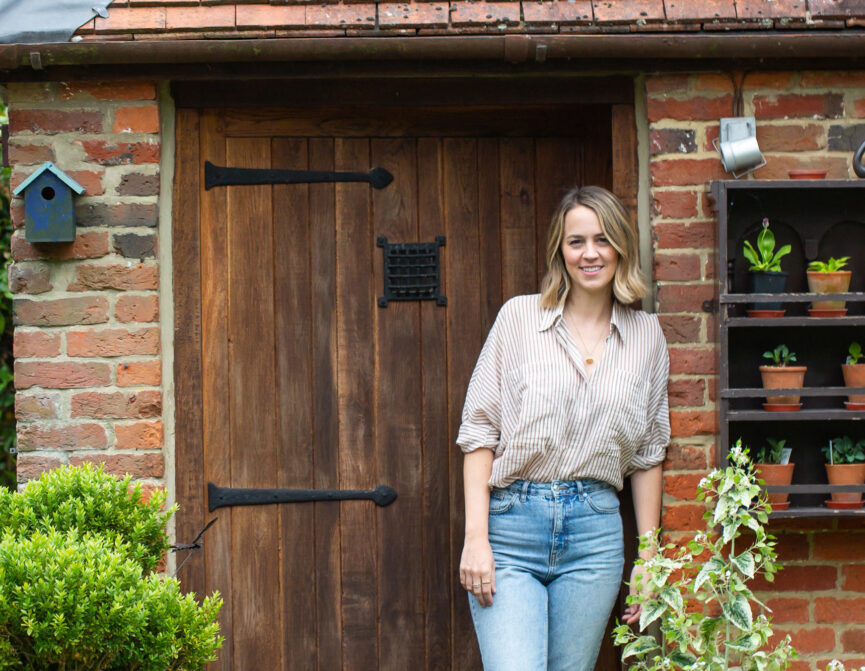Five landscape designers on how to make the most of your outdoor space during the colder months and the beauty of bare branches.
During these months, gardens became true extensions of our homes – places that allowed us to strengthen our connection with the environment and, after months spent indoors, to reunite with loved ones. “Gardens are now so much part of the home that they have truly become the outside room,” notes Kate Gould, founder of Kate Gould Gardens, whose contemporary garden designs embrace outdoor living.
Now as the days turn crisper and the leaves a deep ochre, much of life is beginning to retreat behind closed doors again. Our newly updated gardens swapped for blanket-strewn lounges and heated kitchens. But why not brave the elements in our outdoor spaces? “With thought-out zoning, the right planting and a seamless connection with our homes, there are ways we can extend the use of our gardens into the cooler months,” says award-winning designer Charlotte Rowe, founder of Charlotte Rowe Garden Design – a firm that specialises in contemporary, structured gardens.
So with this in mind, we asked a group of landscape designers – green-fingered experts who are planting fresh ideas – how we can maximise the potential of our outdoor spaces year-round.



Lighting
A concept most associated with interiors, lighting can be a make-or-break feature in our gardens, terraces and rooftops, too. “When I design, lighting is one of the key elements that I consider early on,” says RHS Young Designer of the Year, Ula Maria, who’s naturalistic gardens take inspiration from the countryside of her native Lithuania. Although the winter sun can beautifully silhouette trees and taller plants, shorter days can be brightened with lights that don’t just make it easy to spend long evenings outside but make it atmospheric. Think of dinners by the warm glow of lanterns and cosy conversations beneath fairy lights. Opt for solars to polish your eco-halo.
The secret is simplicity, Ula reveals – focus less on statement fixtures and more on the mood it creates. “Last year, I went to a client’s garden, and they just had a cluster of candles on a table. It looked very inviting,” Ula recalls. Lighting should be clever and subtle, agrees Stefano Marinaz, founder of Stefano Marinaz Landscape Architecture, who uses layered schemes to illuminate a garden’s sculptural features. “Less is more. Uplight selected elements, such as a multistem tree or a path as focal point and avoid lighting the whole space,” he suggests.

Zoning and shelter
According to Charlotte, reimagining your garden into an al-fresco living room that works in both summer and winter requires zoning, another idea borrowed from our interiors. “Break the space up to make it look bigger and think about how to it will be used,” she advises. Our gardens, like our homes, reflect our lifestyle and its configuration should account for how it will be used in the colder seasons. Thinking of inviting friends and family? Crafting pockets where people can gather means planting needn’t be pushed to the borders and keeping furniture away from the doors allows for a seamlessness between inside and out. For those with limited space, Stefan warns against asymmetrical designs, an abundance of mixed materials and too many steps. “They can make it feel smaller and may fragment the space, taking away from its flexibility,” he says.
Visually dividing up your space also creates a screen against windier and wetter climes. “Consider zoning to create smaller, sheltered, cosy places that protect you from the elements,” says Hay-Joung Hwang, founder of landscape design studio Hay Designs. She’s no stranger to bringing the indoors out; her projects include sunken seating areas, elegant pavilions, and built-in banquettes framed by lush evergreens. She continues: “The weather can be unpredictable but shelter, outdoor heating and a visually interesting planting scheme are great steps towards embracing the colder months”.
Yes, pergolas, sail canopies and arbours can be go-to solutions to create a barrier, but Kate recommends harnessing nature and adopting an eco-friendly approach. “Trees are one way to make a garden cosy. Their overhead canopies provide shelter, privacy and the perfect natural habitat for wildlife.” And for gardens with shady microclimates? Tree ferns are a great alternative, she says. “Not only do their long fronds make giant green parasols, they also look magical when lit at night, making them an all-season winner in sheltered town gardens.”

Planting
As temperatures fall, so do the leaves that make our gardens look their best. Around this time, we rely on evergreen plants to bring that sense of privacy and cosiness. “A high percentage of evergreen plants will liven up any space and especially if they flower in the winter. Some such as Skimmia and Sarcococca work well in planters where a terrace is shaded out by nearby buildings and are highly scented too,” Kate points out.
And while sprawling ivy and lavender might liven up a relatively dormant period in our gardens, our landscape designers agree that planting schemes should celebrate seasonality too; the loss of our favourite foliage and the joy of its rebirth as the winter frost retreats. “We never just put evergreens into town gardens. We combine plants that are seasonal with ones that look good all year,” says Charlotte.
Similarly, Stefano notes that contrasting evergreens like broad-leaved sausage vines and star jasmine, both of which provide much-needed texture and structure, with the colourful stems, flowers and berries of plants such as witch hazel and common dogwood amplifies visual interest. To really amp up the sensorial experience, add scented plants – Stefano is a fan of sweet boxes and late-winter Daphnes.
Planting schemes – often dictated by the amount of light your garden can offer – can be rich in colour and by matching them to your décor, it can establish harmony and cohesion. “Try to choose plants – with varying heights and textures – that bring out the colour in your accessories,” Hay-Joung says. Textures also infuse gardens with character, especially when plants begin to shed their vibrant petals. Of course, your planting arrangement needn’t be stringent; for those who want to walk on the wilder –and greener side – Ula likes to keep it naturalistic. “People enlist my help because my style is much more organic. Rather than lawns, my clients are looking for more wildlife-rich and bee-friendly plots because they’re more concerned about the environment. It’s heartwarming to see that this is at the front of their minds.”
Rather than lawns, my clients are looking for more wildlife-rich and bee-friendly plots because they’re more concerned about the environment.
- Ula Maria

Accessorising
Aside from a sensorial planting scheme, considerately placed furniture is one way of drawing people outside. It’s also a medium for diluting the boundaries between inside and out, enhancing the visual link between the spaces. “Furniture should be easy to move, visually light and reflect the design of your interiors,” suggests Stefano. Furniture that can be rearranged is useful when entertaining, making your garden easily adaptable and versatile depending on your needs.
No matter whether you choose built-in or portable pieces, investing in furniture that’s high-quality and built with longevity in mind is crucial advises Charlotte. Sidestepping off-the-shelf pieces, her studio prefers custom-built furniture. “Everything is bespoke, we get everything from specialists.” And it’s not just sofas and dining tables that are seeing a surge in demand as we seek to imbue our outdoor spaces with conviviality. The sale of firepits and chimeneas is skyrocketing. Thankfully, advancements in technology have meant these sources of warmth and light are becoming increasingly sustainable. “Gas and bioethanol are cleaner options and don’t produce fumes,” Ula explains.

Landscaping
It’s easy to forget that when your garden is laid bare by the changing seasons, it’s hard landscaping that takes centre stage. According to Kate, striking that all-important balance between hard and soft landscaping depends on how you want to use your garden. “If you’re an avid entertainer then a clean hard surface will be more useful to you. If you prefer a more natural scheme, then you should lean towards a softer, more planted palette,” she explains. Try and mix it up: hard landscaped surfaces could be softened with gravel, which will also allow plants to creep through. If that doesn’t tick your boxes, there’s plenty of organic and sustainable options. “Flooring materials, once only stone and brick now include porcelain and decking too, both of which are made of natural wood and composite,” Kate says.
When considering landscape materials, Ula suggests thinking about how they will look during wet weather. “When I’m choosing the materials for the garden, I always spray water on it to see how it will change. A light-coloured sandstone might look brilliant when it’s dry but completely different when its wet.”
With our relationship with the environment blossoming in the past 18 months, our gardens have worked hard through the summer. Why should the winter be any different? Steering conversations about landscape design towards seasonality acknowledges that we need to look beyond rose-scented summers and appreciate the beauty of winter too. And what better place to admire the cycle of nature than our own backyards?




